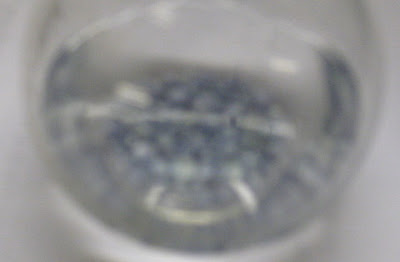

Quote: Originally posted by len1  |
| Quote: |
Quote: Originally posted by MagicJigPipe  |
Quote: Originally posted by len2  |

Quote: Originally posted by garage chemist  |
Quote: Originally posted by mr.crow  |



Quote: Originally posted by NurdRage  |
Quote: Originally posted by len1  |
Quote: Originally posted by len1  |
Quote: Originally posted by len1  |
Quote: Originally posted by blogfast25  |
Quote: Originally posted by watson.fawkes  |
 Except its BP is too low...
Except its BP is too low... 
Quote: Originally posted by Axt  |
Quote: Originally posted by blogfast25  |
Quote: Originally posted by DJF90  |
Quote: Originally posted by blogfast25  |
| Quote: |
Quote: Originally posted by Formatik  |
Quote: Originally posted by watson.fawkes  |
Quote: Originally posted by blogfast25  |
| Quote: |
| Quote: |
 , I won’t be pursuing this anymore, except for with
a sense of mischief to try and get a plastic ampoule with some C2Cl4 and a very small amount of K to explode on impact. Thanks for your input.
, I won’t be pursuing this anymore, except for with
a sense of mischief to try and get a plastic ampoule with some C2Cl4 and a very small amount of K to explode on impact. Thanks for your input.Quote: Originally posted by blogfast25  |
| Quote: |
 Take care, since it looks like significant
amounts of phosgene could also form.
Take care, since it looks like significant
amounts of phosgene could also form.
Quote: Originally posted by Picric-A  |

Quote: Originally posted by mr.crow  |
Quote: Originally posted by blogfast25  |
Quote: Originally posted by Satan  |


| Quote: |
Quote: Originally posted by mr.crow  |
 I really want to try this
myself, and I'd like to know what works before I try to hunt down the more exotic reagents like the shellsol and t-butanol. Apologies if this has
already been done and I missed it.
I really want to try this
myself, and I'd like to know what works before I try to hunt down the more exotic reagents like the shellsol and t-butanol. Apologies if this has
already been done and I missed it.Quote: Originally posted by mr.crow  |
Quote: Originally posted by NurdRage  |
 ), I performed some and was successful in fewer. So yes, we have proven one pot is possible. A billion failures still
doesn't prove its wrong, just one success proves it right. Same thing with the original belief in Pok's work.
), I performed some and was successful in fewer. So yes, we have proven one pot is possible. A billion failures still
doesn't prove its wrong, just one success proves it right. Same thing with the original belief in Pok's work. Quote: Originally posted by NurdRage  |
Quote: Originally posted by condennnsa  |
Quote: Originally posted by condennnsa  |
Quote: Originally posted by condennnsa  |
Quote: Originally posted by condennnsa  |
Quote: Originally posted by condennnsa  |

| Quote: |
| Quote: |